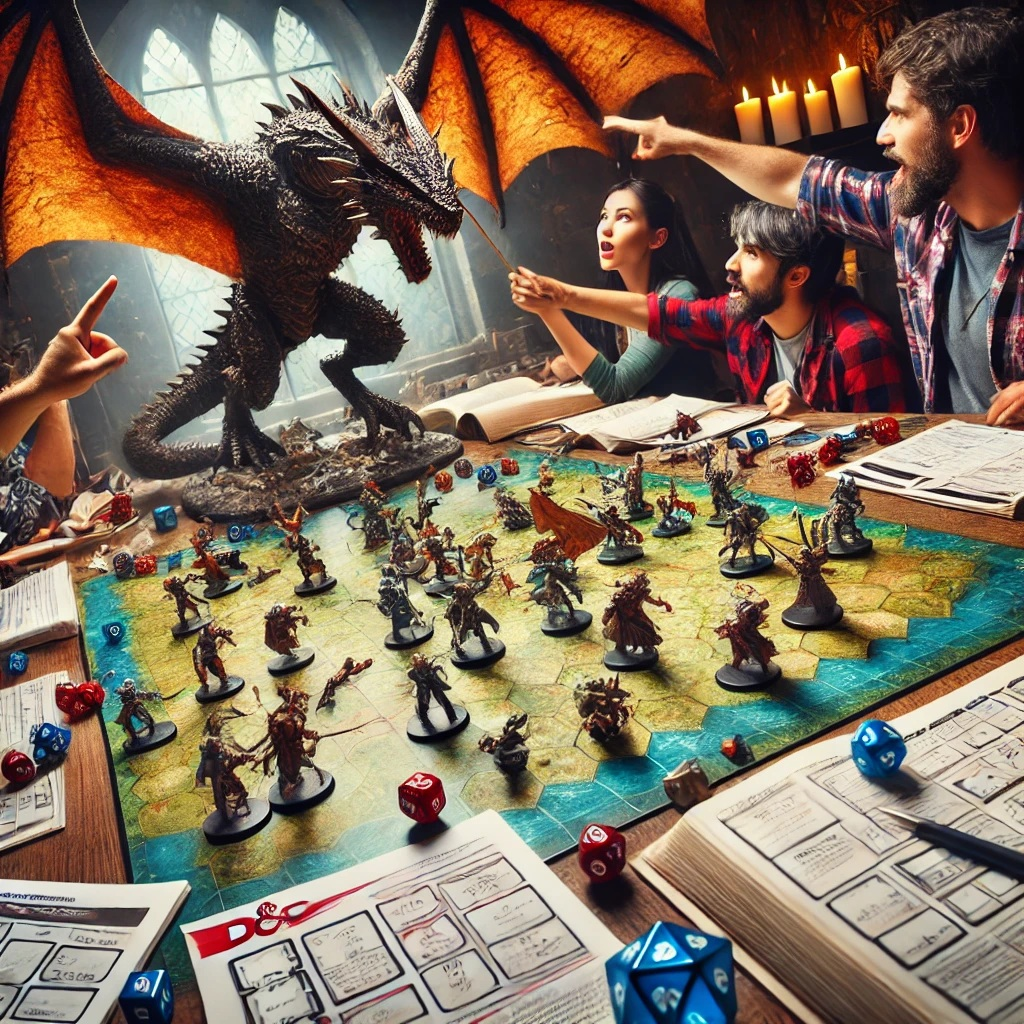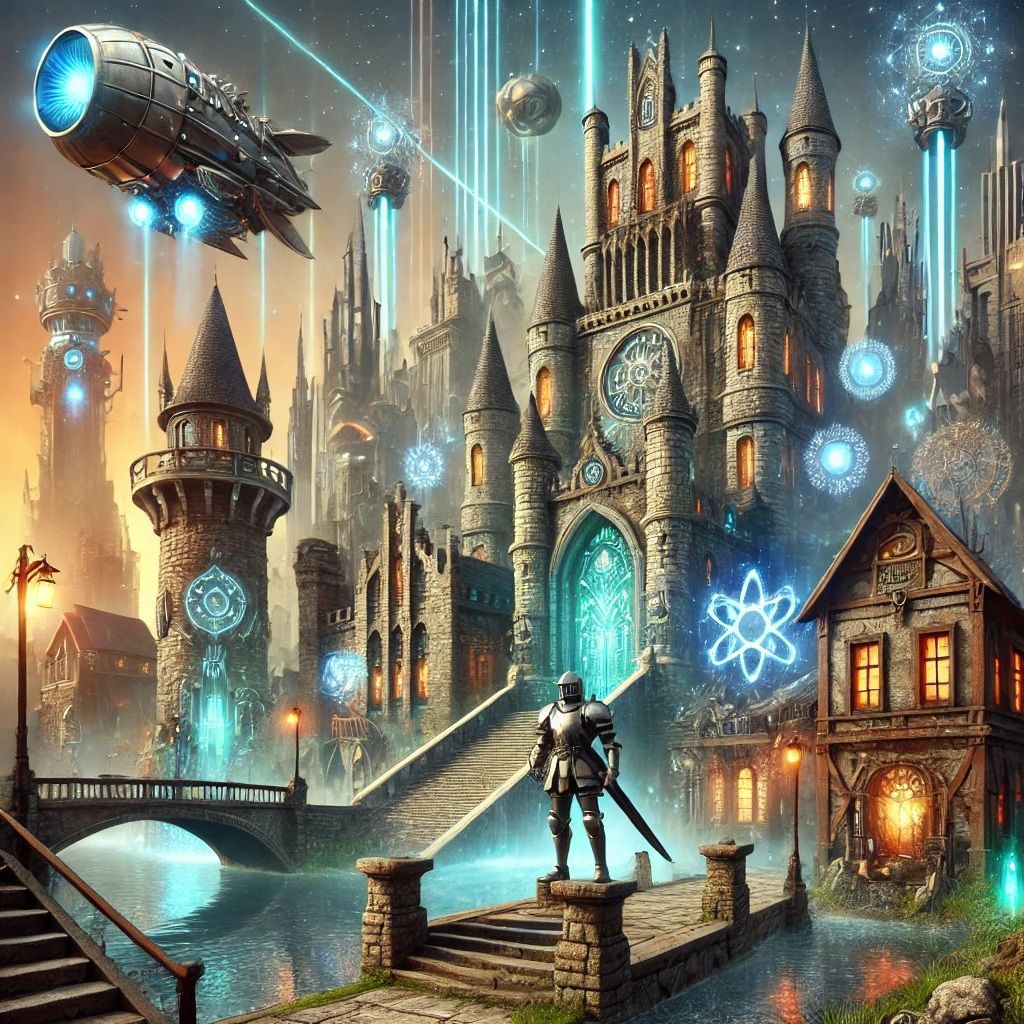Cultural Representation: Incorporating Diverse Cultures Respectfully

To my American readers, Happy Freedom Day! May you end the day with as many fingers, toes, and eyes as you began the day with! Stay safe out there…
Dear Readers, welcome back to our Dungeons & Dragons (D&D) blog! Today, we’re exploring a topic that is both important and complex: cultural representation. Incorporating diverse cultures into your D&D campaigns can enrich your storytelling, create a more immersive world, and foster inclusivity. However, it’s essential to approach this task with respect and sensitivity to avoid perpetuating stereotypes or causing offense. In this post, we’ll discuss strategies and tips for incorporating diverse cultures respectfully in your D&D games. So, let’s embark on this journey of understanding and creativity together.
Understanding the Importance of Cultural Representation
Cultural representation in D&D is about more than just adding variety to your world; it’s about creating a space where all players feel seen and respected. When done thoughtfully, it can enhance the depth and authenticity of your campaign, providing players with rich, diverse experiences.
Why Cultural Representation Matters:
1. Inclusivity:
- Representing diverse cultures can make the game more welcoming and inclusive for players from different backgrounds.
2. Authenticity:
- Incorporating real-world cultural elements can add authenticity and depth to your game world, making it more immersive.
3. Learning and Growth:
- Exploring different cultures can be an educational experience, fostering greater understanding and appreciation among players.
4. Respect and Sensitivity:
- Thoughtful representation helps avoid harmful stereotypes and promotes a respectful portrayal of different cultures.
Research and Preparation
Before incorporating elements of a culture into your game, it’s crucial to conduct thorough research and preparation. This helps ensure that your representation is accurate and respectful.
Steps for Effective Research:
1. Primary Sources:
- Seek out primary sources such as books, articles, and documentaries created by people from the culture you wish to represent. This provides an authentic perspective.
Example: If you want to incorporate elements of Japanese culture, read books by Japanese authors, watch documentaries, and explore historical texts.
2. Consult Experts:
- If possible, consult experts or members of the culture you’re representing. They can provide valuable insights and feedback.
Example: Reach out to cultural organizations, community leaders, or individuals from the culture for guidance and feedback.
3. Diverse Perspectives:
- Consider multiple perspectives within the culture. Cultures are not monolithic, and different groups within a culture may have varying traditions and viewpoints.
Example: Explore the differences between regional traditions in India, such as the cultural distinctions between North and South India.
4. Avoid Stereotypes:
- Be aware of and avoid stereotypes. Focus on nuanced and multifaceted portrayals rather than relying on clichés.
Example: Avoid depicting all members of a culture as having the same traits or professions. Instead, show a range of personalities and roles.
Creating Culturally Rich Settings
One way to incorporate diverse cultures is through the creation of culturally rich settings. This involves designing locations, societies, and environments inspired by real-world cultures.
Designing Culturally Rich Settings:
1. Cultural Landmarks:
- Include cultural landmarks such as temples, marketplaces, and historical sites that reflect the culture’s architecture and aesthetics.
Example: Design a city inspired by ancient Mesopotamia with ziggurats, hanging gardens, and bustling bazaars.
2. Traditions and Festivals:
- Highlight cultural traditions and festivals that add vibrancy and life to your setting. These events can provide opportunities for role-playing and storytelling.
Example: Incorporate a festival inspired by Diwali, where the city is adorned with lights, and characters can participate in celebrations, rituals, and challenges.
3. Social Structures:
- Reflect the social structures and hierarchies of the culture. This can influence interactions, politics, and conflicts within the setting.
Example: Create a society inspired by the caste system in ancient India, exploring both its historical context and its impact on characters and storylines.
4. Language and Names:
- Use language and names that reflect the culture. This adds authenticity and can help immerse players in the setting.
Example: In a setting inspired by West African cultures, use names and phrases from Yoruba, Igbo, or Swahili languages.
Creating Culturally Diverse Characters
Characters are the heart of any D&D campaign, and creating culturally diverse characters can enrich your narrative and provide meaningful representation.
Tips for Creating Culturally Diverse Characters:
1. Authentic Backgrounds:
- Give characters backgrounds that reflect their cultural heritage. This includes family traditions, upbringing, and personal experiences.
Example: A character inspired by Inuit culture might have grown up in a nomadic community, skilled in ice fishing, hunting, and storytelling.
2. Cultural Skills and Knowledge:
- Highlight skills and knowledge unique to the character’s culture. This can influence their abilities, professions, and contributions to the party.
Example: A character inspired by Aztec culture might be a skilled herbalist and warrior, knowledgeable in both medicinal plants and combat tactics.
3. Complex Personalities:
- Avoid one-dimensional portrayals by giving characters complex personalities, motivations, and goals that go beyond their cultural identity.
Example: An Egyptian-inspired character could be a scholar seeking ancient knowledge, driven by both intellectual curiosity and personal ambition.
4. Interpersonal Dynamics:
- Explore how the character’s cultural background affects their interactions with other characters and the world around them.
Example: A character from a matriarchal society might have different views on leadership and authority, influencing their interactions with the party and NPCs.
Role-Playing Culturally Diverse Characters
Role-playing culturally diverse characters involves portraying their cultural background respectfully and thoughtfully. Here are some tips for players and DMs to enhance their role-playing.
For Players:
1. Embrace the Culture:
- Embrace the cultural elements of your character. This includes their values, traditions, and worldview.
Example: If playing a character inspired by Native American cultures, emphasize their connection to nature, respect for ancestors, and community-oriented mindset.
2. Avoid Caricatures:
- Avoid caricatures and exaggerated stereotypes. Strive for a nuanced and respectful portrayal.
Example: Instead of using exaggerated accents or behaviors, focus on authentic cultural traits and practices.
3. Research and Learn:
- Take the time to research and learn about the culture you are portraying. This enhances your understanding and enriches your role-playing.
Example: Read about the history, customs, and values of the culture, and incorporate this knowledge into your character’s actions and decisions.
4. Be Open to Feedback:
- Be open to feedback from your DM and fellow players. If someone points out a potential issue with your portrayal, listen and adjust accordingly.
Example: If a fellow player suggests that your portrayal of a culture feels inaccurate or stereotypical, take their feedback seriously and make necessary changes.
For Dungeon Masters:
1. Encourage Authentic Role-Playing:
- Encourage players to role-play their culturally diverse characters authentically and respectfully. Provide guidance and support as needed.
Example: Offer resources and suggestions to players creating characters from cultures they are not familiar with, and encourage them to explore these aspects in their role-playing.
2. Facilitate Cultural Interactions:
- Facilitate interactions that highlight cultural diversity and promote meaningful role-playing.
Example: Create scenarios where characters can share their cultural practices and knowledge with the group, fostering a deeper understanding and appreciation.
3. Address Stereotypes:
- Be proactive in addressing and avoiding stereotypes in your game. Encourage a respectful and inclusive environment.
Example: If a player’s portrayal of a culture veers into stereotype, gently guide them towards a more accurate and respectful representation.
4. Highlight Cultural Strengths:
- Highlight the strengths and unique contributions of each culture represented in your game. This fosters a positive and empowering portrayal.
Example: Showcase the advanced engineering skills of a culture inspired by ancient Rome, or the rich artistic traditions of a culture inspired by the Renaissance.
Navigating Cultural Sensitivities
Navigating cultural sensitivities requires awareness, empathy, and a willingness to learn. Here are some strategies for handling sensitive topics and ensuring respectful representation.
Strategies for Navigating Cultural Sensitivities:
1. Open Communication:
- Foster open communication among players and between players and the DM. Encourage discussions about cultural representation and sensitivity.
Example: Hold a session zero where players can discuss their characters’ cultural backgrounds and any concerns they might have about representation.
2. Use Content Warnings:
- Provide content warnings for sensitive topics that might arise during the game. This helps players prepare and set boundaries.
Example: Before introducing a storyline involving historical trauma, provide a content warning and discuss how to approach the topic respectfully.
3. Avoid Cultural Appropriation:
- Be mindful of cultural appropriation and strive for respectful representation. This means avoiding the misuse or misrepresentation of cultural elements.
Example: If incorporating elements of Indigenous cultures, ensure that these elements are portrayed accurately and respectfully, and avoid using sacred symbols or practices out of context.
4. Promote Cultural Appreciation:
- Focus on cultural appreciation rather than appropriation. Highlight the beauty, complexity, and contributions of different cultures.
Example: Celebrate the achievements and contributions of a culture, such as its art, music, literature, and philosophy, rather than reducing it to superficial traits.
5. Be Willing to Learn and Adjust:
- Be willing to learn from mistakes and make adjustments as needed. Cultural sensitivity is an ongoing process that requires continuous learning and growth.
Example: If a player or DM realizes that they have unintentionally misrepresented a culture, they should take steps to correct the portrayal and learn from the experience.
Incorporating Cultural Themes into Storylines
Incorporating cultural themes into your storylines can add depth and resonance to your campaign. These themes can explore cultural values, conflicts, and transformations.
Tips for Incorporating Cultural Themes:
1. Explore Cultural Values:
- Explore the values and principles that are central to the cultures represented in your game. This can inform character motivations and story arcs.
Example: A campaign might explore themes of honor and duty inspired by samurai culture, with characters navigating complex moral dilemmas and loyalty conflicts.
2. Address Cultural Conflicts:
- Address cultural conflicts and tensions in a respectful and nuanced way. This can create compelling drama and character development.
Example: Two cultures with differing values and traditions might clash, leading to political intrigue, negotiations, and potential alliances.
3. Highlight Cultural Resilience:
- Highlight the resilience and adaptability of cultures in the face of challenges. This can inspire and empower players.
Example: A culture facing colonization or oppression might show resilience through acts of resistance, preservation of traditions, and adaptation to new circumstances.
4. Foster Cultural Exchange:
- Foster cultural exchange and learning between characters from different backgrounds. This can lead to mutual understanding and growth.
Example: Characters from different cultures might share knowledge, skills, and traditions, leading to personal growth and strengthened bonds.
5. Use Cultural Myths and Legends:
- Incorporate cultural myths and legends into your storylines. These can provide rich narrative material and deepen the cultural context.
Example: A quest might involve seeking a legendary artifact from Norse mythology, with characters encountering mythic creatures and unraveling ancient prophecies.
Respecting and Celebrating Real-World Cultures
Respecting and celebrating real-world cultures in your D&D game involves recognizing their richness and diversity while avoiding harmful stereotypes.
Tips for Respecting and Celebrating Cultures:
1. Acknowledge Complexity:
- Acknowledge the complexity and diversity within cultures. Avoid oversimplifying or homogenizing cultural traits.
Example: When representing African cultures, highlight the diversity of traditions, languages, and histories across different regions and communities.
2. Highlight Contributions:
- Highlight the contributions and achievements of different cultures. This fosters a positive and empowering portrayal.
Example: Showcase the scientific and mathematical advancements of ancient Islamic cultures, or the architectural marvels of the Inca civilization.
3. Foster Empathy and Understanding:
- Use your game as an opportunity to foster empathy and understanding among players. Encourage them to see the world from different cultural perspectives.
Example: Create storylines that explore the impact of colonialism from the perspective of the colonized culture, highlighting their struggles and resilience.
4. Celebrate Cultural Practices:
- Celebrate cultural practices and traditions in your game. This can provide a rich and immersive experience for players.
Example: Incorporate traditional dances, music, and rituals from different cultures into your game, allowing characters to participate and learn.
5. Be Respectful and Thoughtful:
- Always approach cultural representation with respect and thoughtfulness. Consider the impact of your portrayal on players and the broader community.
Example: If representing a culture that has experienced historical trauma, handle the subject with sensitivity and respect, avoiding trivialization or exploitation.
Conclusion
Incorporating diverse cultures respectfully into your D&D game is a rewarding endeavor that can enrich your storytelling and foster inclusivity. By conducting thorough research, creating culturally rich settings and characters, navigating cultural sensitivities, and celebrating real-world cultures, you can create a vibrant and respectful representation that enhances your campaign.
Remember, cultural representation is an ongoing process that requires continuous learning and growth. Embrace the opportunity to explore and appreciate the richness of diverse cultures, and use your game as a platform for fostering understanding and empathy.
Until next time, Dear Readers…
























